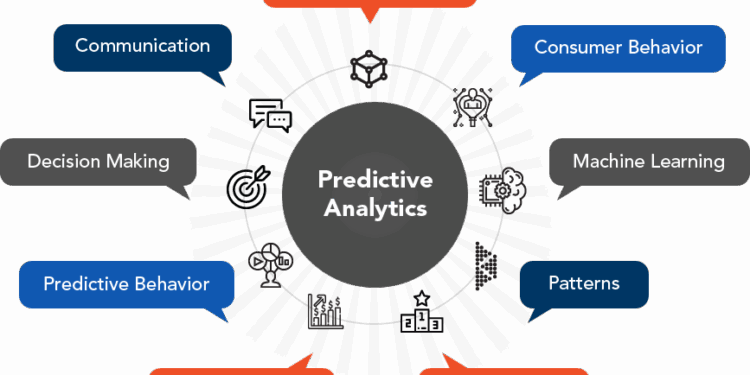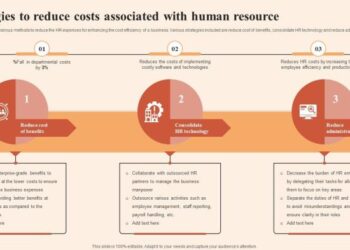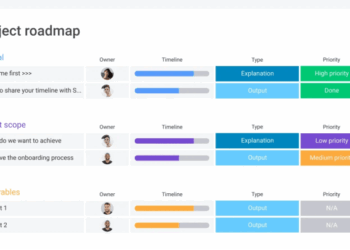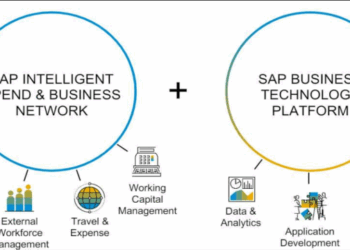Embark on a journey into the world of Platform-Based Insights to Predict Market Behavior, where data-driven strategies shape the future of market analysis. From defining key concepts to exploring real-world applications, this guide delves deep into the realm of predictive analytics.
As we unravel the layers of platform-based insights, a clearer picture emerges of how businesses harness the power of data to stay ahead in the dynamic market landscape.
Introduction to Platform-Based Insights
Platform-based insights refer to the use of specific digital platforms or tools to gather data and analyze market trends in order to predict market behavior accurately. By leveraging these platforms, businesses can make informed decisions and strategies based on real-time data and insights.
Significance of Leveraging Platforms for Market Analysis
- Platforms provide access to vast amounts of data: Platforms like Google Analytics, social media analytics tools, and market research platforms offer a wealth of data that can be analyzed to understand consumer behavior and market trends.
- Real-time insights: With platforms, businesses can access real-time data that allows them to respond quickly to market changes and trends, giving them a competitive edge.
- Predictive analytics: Many platforms use advanced algorithms and machine learning to predict future market behavior based on historical data, helping businesses anticipate trends and make proactive decisions.
Examples of Platforms for Gaining Market Insights
- Google Analytics: A popular platform for tracking website traffic, user behavior, and conversions, providing valuable insights for digital marketing strategies.
- Social media analytics tools: Platforms like Hootsuite, Sprout Social, or Buffer offer insights into social media performance, audience engagement, and trends, helping businesses optimize their social media presence.
- Market research platforms: Platforms such as Nielsen, Mintel, or Euromonitor provide in-depth market research reports, consumer insights, and industry analysis to guide strategic decision-making.
Types of Data Utilized for Predicting Market Behavior
In the realm of platform-based market predictions, a variety of data sources are harnessed to gain valuable insights and forecast market behavior accurately. These data types play a crucial role in understanding trends, consumer behavior, and overall market dynamics.
Structured and Unstructured Data
Structured data, such as numerical figures, statistics, and organized information, are essential for creating models and analyzing patterns in market behavior. On the other hand, unstructured data, including social media posts, customer reviews, and other text-based content, provide a deeper understanding of consumer sentiment and preferences.
By combining structured and unstructured data, analysts can paint a comprehensive picture of the market landscape.
Real-Time Data Importance
Real-time data holds significant importance in predicting market behavior with precision. This type of data enables analysts to capture sudden shifts, emerging trends, and immediate responses from consumers. By leveraging real-time data, businesses can make informed decisions quickly and adapt strategies to stay ahead in the competitive market environment.
Tools and Technologies for Analyzing Market Behavior

Artificial intelligence and machine learning play a significant role in predicting market behavior by analyzing vast amounts of data. These technologies can identify patterns, trends, and anomalies that human analysts may overlook. Additionally, the integration of data visualization tools enhances the interpretation of market insights, making complex data more accessible and understandable.
Popular Tools and Technologies
- Python: A versatile programming language commonly used for data analysis and machine learning.
- R: A statistical computing and graphics software widely employed for analyzing and visualizing data.
- Tableau: A data visualization tool that helps in creating interactive and shareable dashboards.
- TensorFlow: An open-source machine learning library developed by Google for building and training neural networks.
- IBM Watson: A cognitive computing platform that utilizes AI to process and analyze data for market predictions.
Artificial Intelligence and Machine Learning in Market Predictions
Artificial intelligence and machine learning algorithms can process large datasets to recognize patterns and correlations that influence market behavior. By continuously learning from new data, these technologies can adapt and improve their predictive capabilities over time
Integration of Data Visualization Tools
Data visualization tools like Tableau and Power BI allow analysts to create interactive charts, graphs, and dashboards that provide a visual representation of market trends and patterns. These tools enable users to explore data from different perspectives, identify outliers, and communicate insights effectively.
By integrating data visualization tools into the analysis process, organizations can make informed decisions based on clear and actionable insights.
Strategies for Implementing Platform-Based Insights
Implementing platform-based insights for predicting market behavior involves several key steps. Companies need to gather relevant data, analyze it using advanced tools and technologies, and develop actionable insights to forecast market trends accurately. Here are some strategies used by successful companies in implementing platform-based insights:
Data Collection and Analysis
- Collecting a wide range of data from various platforms such as social media, e-commerce sites, and industry reports.
- Utilizing data analytics tools to process and analyze the collected data to identify patterns and trends.
- Employing machine learning algorithms to predict future market behavior based on historical data.
Collaboration and Integration
- Collaborating with different departments within the organization to ensure a holistic approach to market analysis.
- Integrating platform-based insights into existing business processes to make data-driven decisions.
- Ensuring that insights are accessible to all relevant stakeholders to facilitate informed decision-making.
Continuous Monitoring and Adaptation
- Regularly monitoring market behavior and updating insights based on new data and changing trends.
- Being agile in response to market dynamics and adjusting strategies accordingly to stay ahead of the competition.
- Investing in ongoing training and development to keep up with the latest tools and technologies in market analysis.
Challenges and Considerations
- Ensuring data privacy and security while collecting and analyzing large volumes of data from different sources.
- Overcoming resistance to change within the organization and promoting a data-driven culture.
- Dealing with the complexity of integrating platform-based insights into existing systems and processes.
Final Conclusion
In conclusion, Platform-Based Insights offer a strategic advantage in foreseeing market trends and making informed decisions. By leveraging cutting-edge tools and technologies, businesses can navigate the complexities of the market with confidence and clarity.
Popular Questions
What role do platforms play in predicting market behavior?
Platforms provide a wealth of data and insights that businesses can analyze to anticipate market trends and consumer behavior.
How is real-time data essential for accurate market predictions?
Real-time data allows businesses to adapt quickly to changing market conditions and make timely decisions based on the latest information available.
What challenges are associated with implementing platform-based insights?
Challenges include data privacy concerns, integrating diverse data sources, and ensuring the accuracy and reliability of the insights generated.











